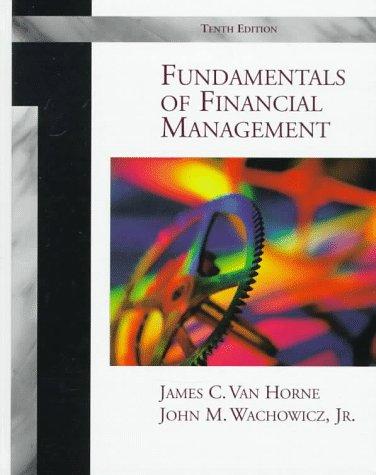 Answer Both A and B please! The market value of the notes payable is equal to the book vale.
Answer Both A and B please! The market value of the notes payable is equal to the book vale.
Problem 2 (25 pts): Dunder Mifflin uses a mix of short term debt (rrst), long term debt ( rd), preferred stock ( rps), and common stock ( rs). Its tax rate is 25%. Use that information to answer the following questions: a) Using the information in the table below, find out Dunder Mifflin's WACC. (16 pts) Notes: 1. The market value of the notes payable is equal to the book value. This is not the case for long term bonds. 2. The common stock price is $30 per share. There are 60 million shares outstanding, for a total market value of equity of 530(60)=$1,800 million. (hint: use the CAPM method to compute Rs) 3. The preferred stock price is $100 per share. There are 1 million shares outstanding, for a total market value of preferred of $100(1)=$100 million. Cost of capital component for WACC: Target capital structure weight, w: Weighted component cost: \begin{tabular}{|c|} \hline 0%= Sum \\ \hline 0.00%= Sum \\ \hline \end{tabular} WACC= b) Asnwer the following questions (9pts) : 1. Should managers use the historical or maginal cost of debt to compute the WACC? 2. Should managers use the book value or the market value of capital components to compute the WACC? 3. Does the cost of each individual component increase linearly from left to right? Why or why not? Problem 2 (25 pts): Dunder Mifflin uses a mix of short term debt (rrst), long term debt ( rd), preferred stock ( rps), and common stock ( rs). Its tax rate is 25%. Use that information to answer the following questions: a) Using the information in the table below, find out Dunder Mifflin's WACC. (16 pts) Notes: 1. The market value of the notes payable is equal to the book value. This is not the case for long term bonds. 2. The common stock price is $30 per share. There are 60 million shares outstanding, for a total market value of equity of 530(60)=$1,800 million. (hint: use the CAPM method to compute Rs) 3. The preferred stock price is $100 per share. There are 1 million shares outstanding, for a total market value of preferred of $100(1)=$100 million. Cost of capital component for WACC: Target capital structure weight, w: Weighted component cost: \begin{tabular}{|c|} \hline 0%= Sum \\ \hline 0.00%= Sum \\ \hline \end{tabular} WACC= b) Asnwer the following questions (9pts) : 1. Should managers use the historical or maginal cost of debt to compute the WACC? 2. Should managers use the book value or the market value of capital components to compute the WACC? 3. Does the cost of each individual component increase linearly from left to right? Why or why not
 Answer Both A and B please! The market value of the notes payable is equal to the book vale.
Answer Both A and B please! The market value of the notes payable is equal to the book vale. 





